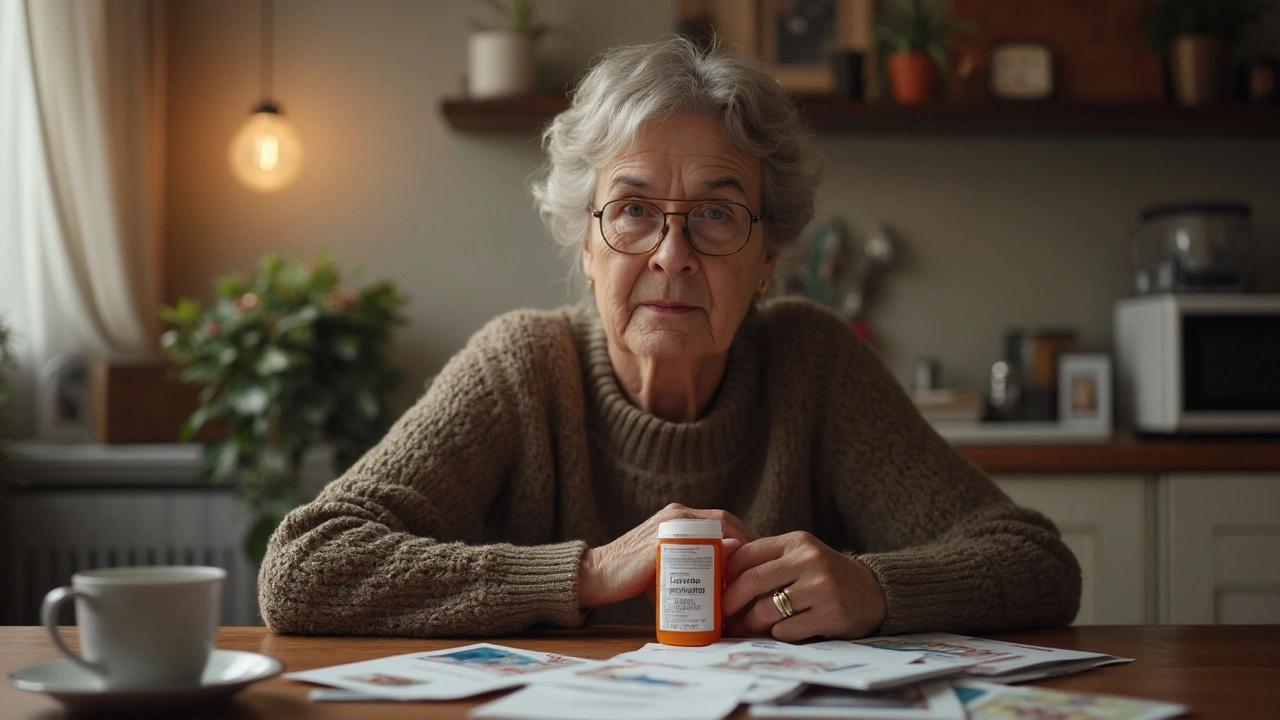Side effects: what to watch for and how to act
Side effects are an expected part of using medicines, supplements, and some treatments. You need clear, practical tips to spot problems, reduce harm, and talk to your doctor. This tag gathers articles about common drug reactions, real-world examples, and safe ways to buy and use medicines.
Many drugs cause predictable side effects: nausea, drowsiness, headache, stomach upset, or skin rash. Some reactions are mild and pass within days. Others can be serious — trouble breathing, severe skin peeling, sudden swelling, chest pain, fainting, or new neurological changes. Know the difference so you can act fast.
Common culprits include pain relievers, antibiotics, antidepressants, hormonal drugs, and cancer therapies. For example, acne drug isotretinoin (Tretiva) can cause dry skin and mood changes; asthma inhalers may irritate the throat; blood pressure and anxiety meds can make you dizzy. Cancer drugs like erlotinib have side effects that need close monitoring.
How to read a drug's side effect info
Read the patient leaflet and the "side effects" section on reliable sites. Focus on frequency (common, uncommon, rare) and severity (mild vs. life-threatening). If a leaflet lists interactions, check your other prescriptions and supplements. Don’t ignore timing: some effects appear within hours, others after weeks or months. Keep a simple log: date, symptom, drug taken, dose, and if the symptom improved after stopping the drug.
When to seek help and how to report reactions
Call your doctor or emergency services for breathing trouble, swelling of face or throat, fainting, severe bleeding, or signs of liver failure (yellow skin or dark urine). For less urgent issues — persistent rash, ongoing headache, or mood change — contact your prescriber for advice before stopping the medicine. Stopping suddenly can be dangerous for some drugs.
You can report suspected side effects to your country’s adverse event program. In the US use MedWatch; in the UK use the Yellow Card scheme. Reporting helps track rare problems and improves safety for everyone.
Practical tips to lower risk
Never mix medicines without checking interactions. Ask your pharmacist.
Start new medications one at a time when possible, so you can tell which causes an issue.
Use the lowest effective dose and follow instructions on timing and food.
Be cautious with online pharmacies: buy only from licensed, reviewed sources. Our site covers safe buying guides for medications like Xanax, Phenazopyridine, and isotretinoin.
Watch for withdrawal when stopping psychiatric or pain medicines; ask about tapering.
This tag also links deeper articles on specific drugs and conditions — alternatives to naproxen, escitalopram, gabapentin, and info on hormonal risks with tibolone or levothyroxine overuse. Use those pieces to compare risks, side effects, and monitoring needs.
If you want help understanding a side effect you’re seeing, describe the symptom, the medicine, and when it started. We’ll point you to relevant articles and clear next steps.
Keep a list of all medicines and supplements in your phone. Share it at every doctor visit. That one habit prevents interactions, speeds diagnosis, and often avoids unnecessary side effects and saves time too.








